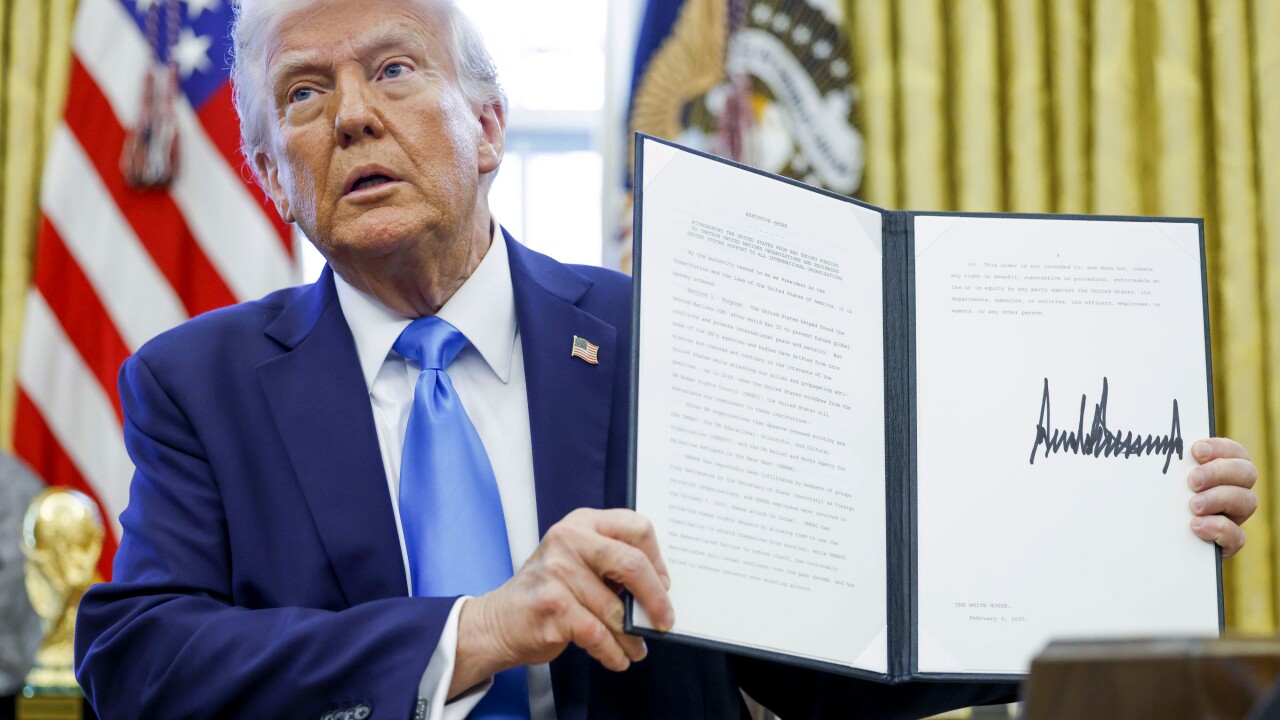-
Success rates vary wildly for innovation labs, but some basic principles increase a banks chances of the incubation process leading to viable product expansion.
April 28 -
Eastern Bank's 18-month-old innovation unit, run by startup veterans, is preparing to release its first product as the industry continues to allocate resources to internal tech labs while wondering when and how such efforts will pay off.
October 28 -
Under the direction of Richard Holbrook, Eastern Bank has prepared itself for the next 200 years by embracing a culture innovation, adding scale through acquisitions and advocating for the less fortunate in its community. It's an unusual formula, but it has worked and that's why he is one of American Banker's three Community Bankers of the Year for 2015.
December 16 -
With the hiring of the former PerkStreet team, the Boston bank joins the likes of BBVA Compass in teaming with nonbank disruptors to help it better compete in the digital age.
April 29
On one of his first projects heading up the
But it was all part of a larger plan — one that ultimately would flourish and help the $9.9 billion-asset Boston bank develop and launch new products and services much more quickly than before.
"I know it's kind of audacious and maybe ludicrous when you see a bank that tries to operate faster than a fintech company," O'Malley said at Celent Innovation and Insight Day in New York this spring. But he insists that's exactly what his Eastern Labs unit is doing.
The team in the innovation lab accounts for about 7% of the bank's workforce, and consists of 50% developers and designers, 25% data scientists and 25% bankers. The budget for research and development grows as long as the bank does well, because "we decided to take 1% of the revenue from the bank and invest that into R&D," said O'Malley, who is the chief digital officer.
The initiative can be seen as a potential template for other banks to consider, which is one reason why Eastern won Celent's "Model Bank of the Year" award. In just 14 months, Eastern created, tested and rolled out a small-business lending product with an application process as fast and easy as online rivals.
The formula O'Malley follows is a familiar one by now for those interested in innovation, but remains rare among community banks. With "rapid-cycle experimentation," as he calls it, Eastern runs short test spurts of prototype products lasting no more than several months. The expectation is that there will inevitably be failures — but also many things learned, which can then be applied to future tests. "If we're doing our jobs right, most of our tests are going to fail," O'Malley said.
Eastern did the first test on the new small-business loan in November 2014, targeting roughly 500 existing customers. The application, for loans of $10,000 to $100,000, was designed to be completed entirely on a mobile device. To facilitate credit approval within minutes, "we chose a very loose credit policy to do the test with," O'Malley said. "This was an incredibly controversial decision inside of the bank" — hence the yelling.
But Eastern — which is, by the way, a 197-year-old mutual — did the test anyway. "Unlike just about every other decision in the bank, there isn't a committee that decides how we choose what to work on in the labs," O'Malley said. "There is one guy — he's a bit of jerk about thinking about what he wants to work on — and that's me."
The bank did not build an entirely new loan-origination platform at this stage, but rather adapted an existing platform. "That, maybe, is part of the secret sauce for how we and, frankly, how most fintech startups move quickly," O'Malley said. "Work with the products that you already know. Don't overpay for those learnings. Don't build an enterprise-grade system to figure out the customers didn't want to buy in the first place. Build as little technology as you need to let you run the test."
In the first test, 6.1% of all the businesses the bank reached out to applied for a loan. A second test the following month, with tighter credit standards, got a 6.8% response rate. O'Malley said he had worked on many new products in a former job at Capital One and had never seen such strong results. "So at this point in time, we had some level of confidence that there was something interesting going on here."
The next step was to figure out if the product could be scaled up in a way that would be sustainable and profitable for the bank. So the third test, conducted in April 2015, involved offering the product at 10% of the bank's branches. To facilitate that, Eastern needed an origination system connected to real-time decisioning and capable of handling both digital and branch applications. Building a temporary solution took about four months. "We still didn't want to build too much," O'Malley said. "It could have taken a lot longer."
Response rates increased to 7.1% in that third test. "The reason was that we got the bankers involved," O'Malley said. "The human touch is really, really powerful. And most of our applications in that test and today come in through our bankers ... which is really validating for a community bank that prides itself on its customer relationships."
Branches that were involved in the test had four to five times the small-business loan volume of those that weren't. That was enough to prompt Eastern to move forward with the new product, fully build out the technology, implement the risk processes needed and get regulators on board.
"We delayed doing all the hard work until we knew that we actually had something in front of us," O'Malley said.
Eastern began offering the
So much for those who contend that community banks can't be innovative.
O'Malley said





